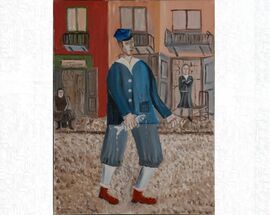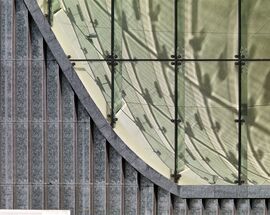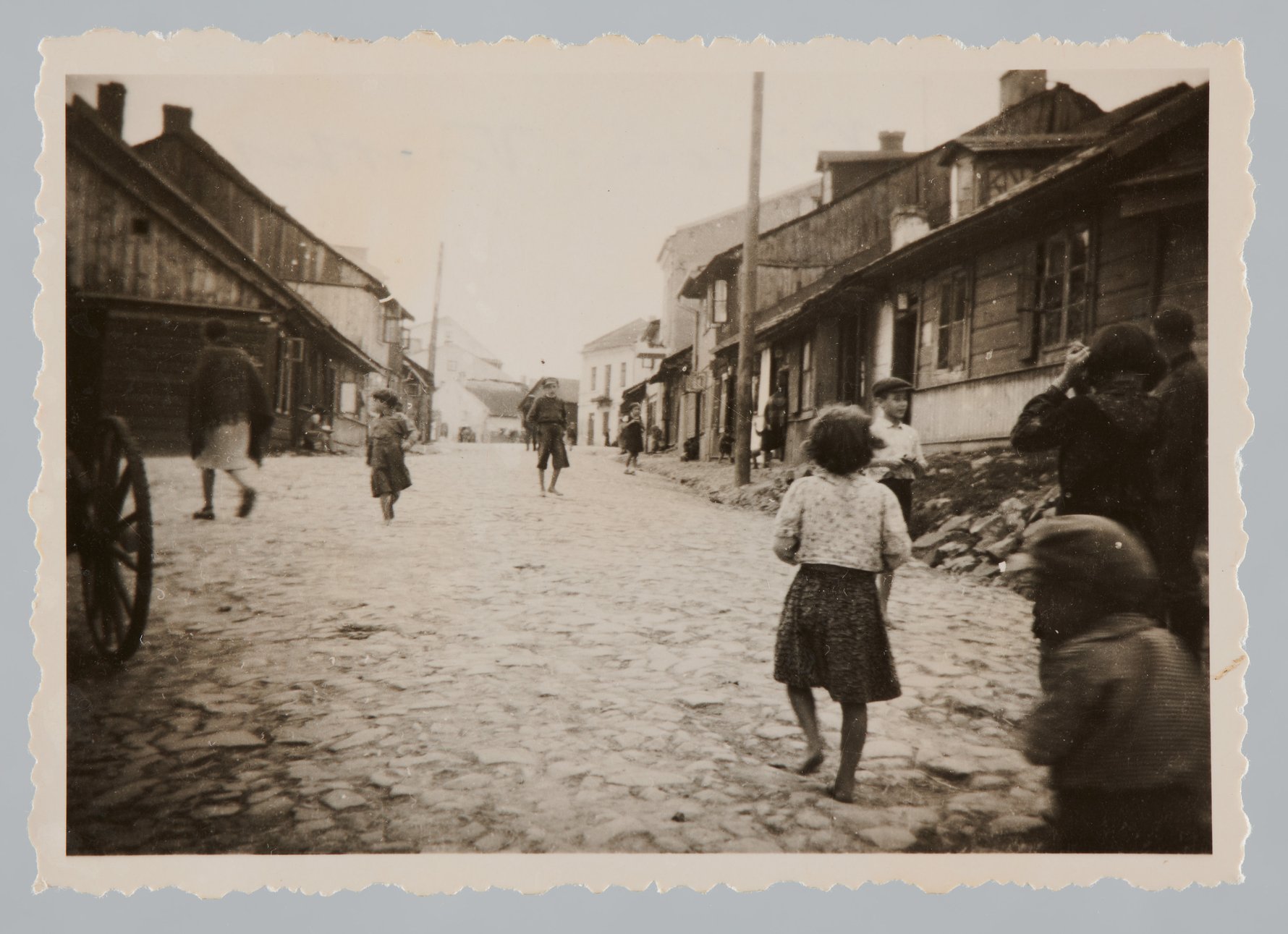
This exhibit, which is deeply important viewing for anyone interested in the history of the area and in Jewish history, looks specifically at the Opatów Shtetl in southeastern Poland, as recalled in detail by artist Mayer Kirshenblatt (1916-2009), who emigrated to Canada in 1934 but remembers what his town was like before the Holocaust. It's an impactful reminder of the hundreds of shtetls that used to exist around Poland before the war.
"Today, not a single Jew remains in most of these towns, but many of their cemeteries, synagogues, and other communal buildings still stand, silent witnesses to once-vibrant Jewish communities," the museum wrote in a statement on the exhibit.
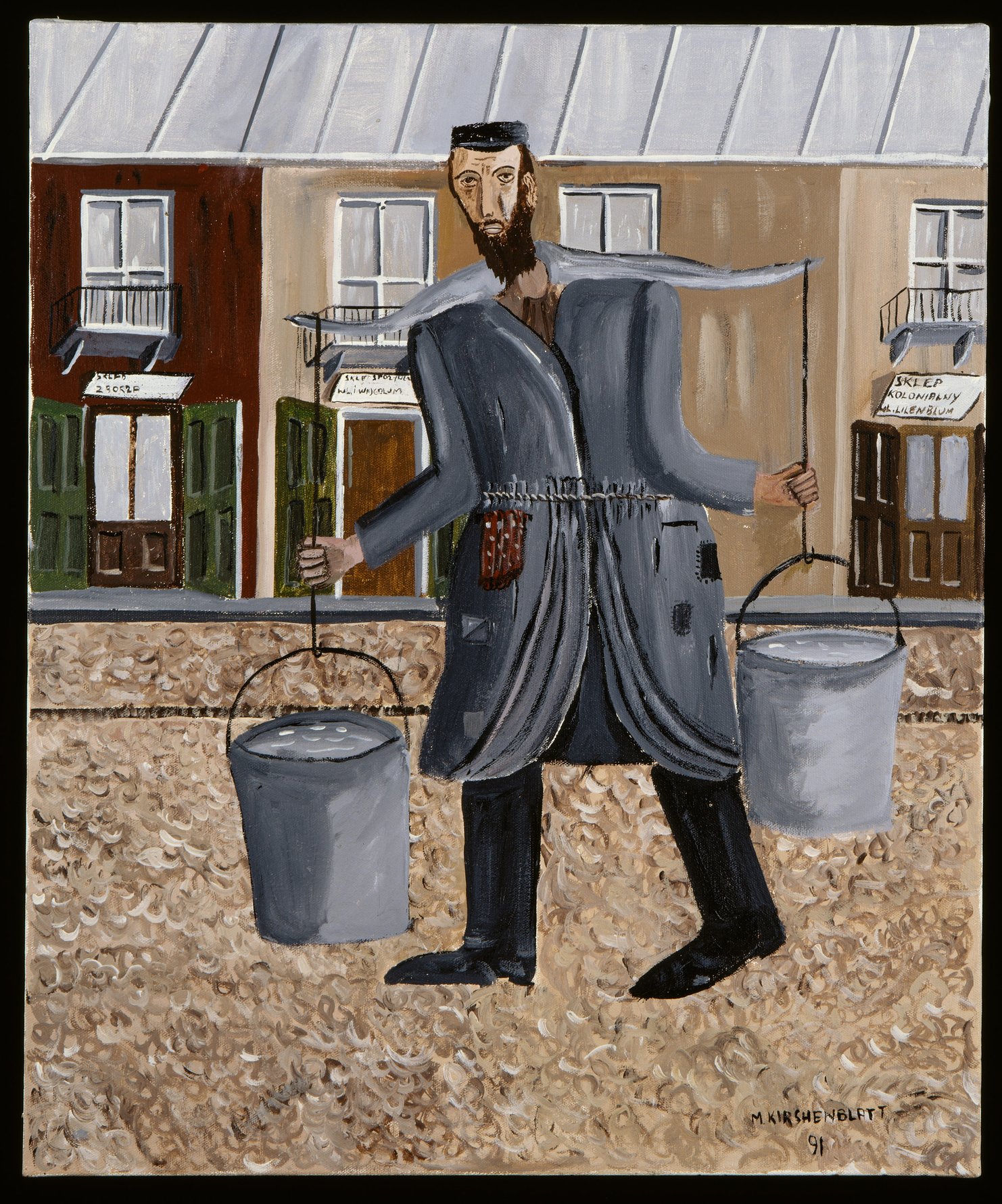
The memory of the shtetl is recalled not only through Mayer Kirshenblatt and his paintings, which are full of color and even humor, but also through artefacts from collectors and private donors (including everyday, sacred and precious objects), which are now on display at the exhibit.
In contrast to the images and recallations of the past, the exhibit also includes details of the present-day town, with photographs documenting Jewish traces of the past in modern-day Opatów, like the cheder building (a school for Jewish children) which today holds a market and apartments. Many of the former shtetl buildings are either ruined, collapsed or up for demolition, but in putting together this exhibit, curators were able to recover some old wood from the houses in Opatów, which was used to build the exhibition space.
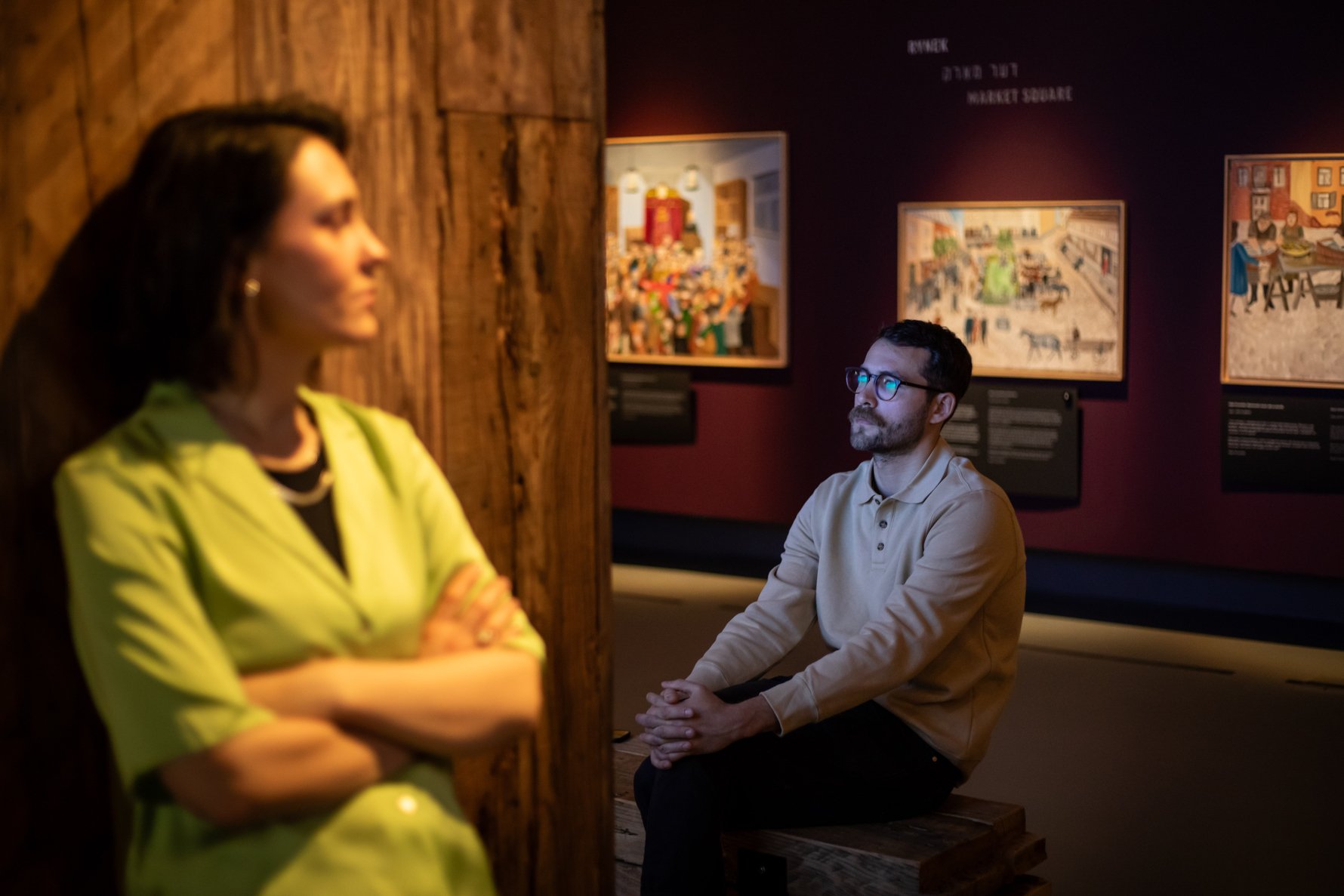
Curators Justyna Koszarska-Szulc and Natalia Romik have documented the process by which what remained of the shtetl after the war was appropriated, neglected, or dismantled to produce today’s “post-Jewish” town. In describing the former shtetl as a "post-Jewish" town, the museum hopes to impart the idea of preserving or restoring memory. These former shtetls are spaces once occupied and lived in, and loved—but the robust life and culture that was once there is now only evident in these artefacts, photographs, and memories.
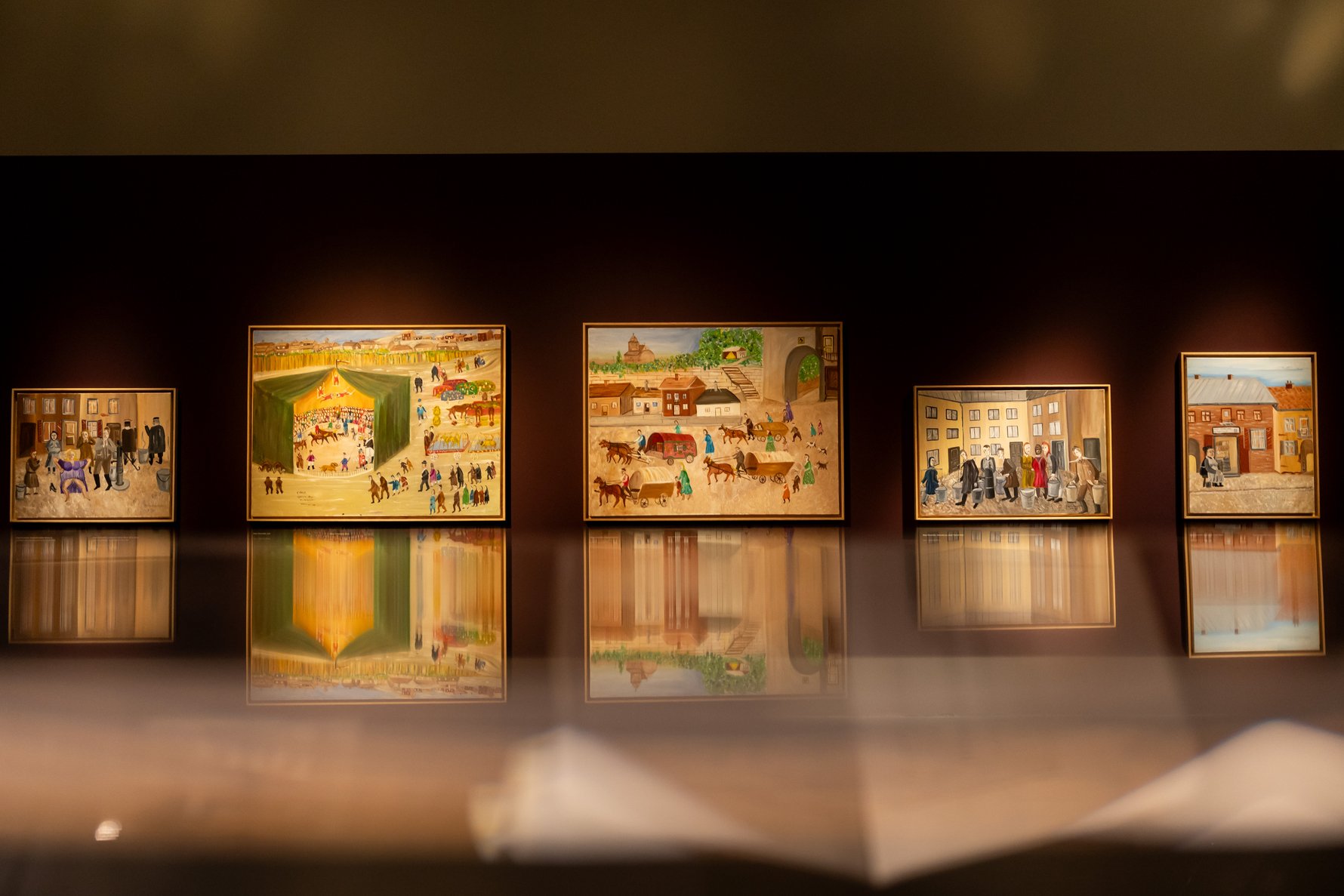
The exhibition also has a space for rest, where visitors can learn more about Kirshenblatt through recorded conversations with his daughter and personal keepsakes. For all visitors, the museum recommends an audio guide, but especially for families. A special free family audio guide (for ages 4-10) includes a tour written by a children's literature author, and features "Little Mayer" who acts as a guide around his former town. Children will also find several hands-on/interactive activities including magnetic puzzles and a chance to paint.


